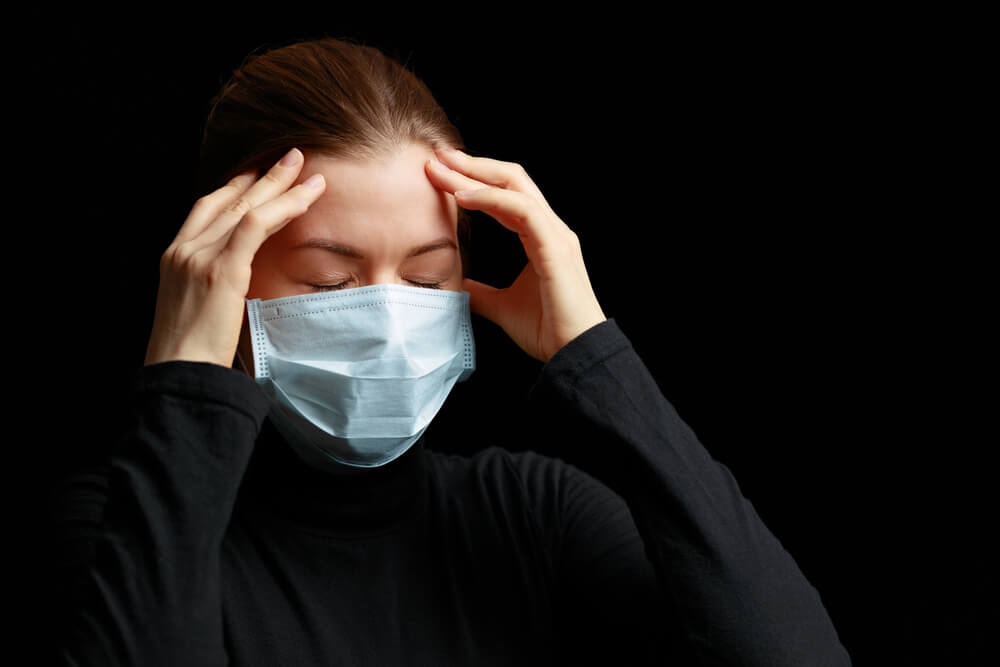Scientists have identified non-obvious symptoms of coronavirus: a list
A team of scientists identified several unobvious additional symptoms of coronavirus 2019-nCov, which can occur in the early days of the disease, even before a fever or a dry cough. The results of the study were published in the famous medical journal. Lancet.

Photo: Shutterstock
Experts examined the pattern of disease in 191 adults with a positive COVID-19 test, who were treated in two hospitals in Wuhan, China, from December 29, 2019 to January 31, 2020. During the study, specialists compared medical histories, prescribed medications, laboratory test results, and patient demographic information. The nature of the course of the disease, its symptoms were also studied, patients underwent radiography and computed tomography of the chest. As a result, scientists concluded that other symptoms common to a certain group of patients were added to previously known manifestations of coronavirus disease.
The study identified three additional symptoms of COVID-19: headache, dizziness and loss of smell. This symptom complex was recorded in 8% of the studied patients from Wuhan. Headaches - some “excruciating” - appeared in the very first days after contracting coronavirus.
On the subject: From infection to recovery: how the symptoms of Covid-19 change day after day
Patients with confirmed COVID-19 disease also confirmed that they experienced dizziness. But the numerous coronavirus infected not only in China, but also in Italy, Germany and other countries complained about the loss of smell and taste. In Germany, more than 2/3 of all cases reported that they had lost the ability to capture odors and taste.
Experts believe that the combination of the three above symptoms in combination with other manifestations characteristic of coronavirus disease suggests that the likelihood of detecting COVID-19 in a person is three times higher compared to those who experience only symptoms similar to those of ARVI - cough and fever.
Scientists also named several indirect signs of the disease - a subjective feeling of malaise, discomfort, a state of confusion and anxiety. This was especially common in older people who at that time did not show other signs of the disease.
Researchers also described a complete picture of the course and development of COVID-19. According to scientists, the average fever in coronavirus disease lasts 12 days, but the cough persists for much longer. 45% of those recovered were still coughing at the time of discharge. Shortness of breath disappears after about 13 days, but in those who could not cope with the disease, this symptom persisted until death.
Of the examined patients, out of 191 people, 137 were discharged and 54 died in the hospital. 91 (48%) patients had concomitant pathologies, the most common was hypertension (58 [30%] patients), followed by diabetes (36 [19%] patients) and coronary heart disease (15 (8%) patients). Multivariate regression showed an increased chance of nosocomial death associated with an older age. The average virus isolation time was 20 days in survivors, but the virus was detected until death in those who did not survive. The longest observed duration of virus isolation in survivors was 37 days.
On the subject: Part of COVID-19 survivors is newly infected with coronavirus: what is known
Let us recall the main, most characteristic symptoms of coronavirus infection - they were first written about in a report by the World Health Organization in February, and little has changed since then. The report described 56 thousand cases of COVID-19, among them 88% experienced fever, 68% had a dry cough, 40% felt tired, and less often shortness of breath, digestive problems and weakness were observed.
WHO representative Margaret Harris noted in the report that the first most obvious symptom of coronavirus infection is high temperature, which is observed in more than 90% of cases.
Less commonly, those infected experience weakness, muscle pain, confusion, and other symptoms. 11% of patients complained of chills, 14% spoke of muscle pain. Runny nose or nasal congestion were observed in 5% of patients.
Read also on ForumDaily:
Light at the end of a coronavirus: 4 reasons to remain optimistic during a pandemic
10 habits that increase the risk of catching a coronavirus and infecting others
COVID-19: debunking popular myths about the disease
Fakes about coronavirus and not only: why do we believe false information
Subscribe to ForumDaily on Google NewsDo you want more important and interesting news about life in the USA and immigration to America? — support us donate! Also subscribe to our page Facebook. Select the “Priority in display” option and read us first. Also, don't forget to subscribe to our РєР ° РЅР ° Р »РІ Telegram and Instagram- there is a lot of interesting things there. And join thousands of readers ForumDaily New York — there you will find a lot of interesting and positive information about life in the metropolis.











